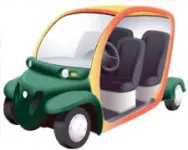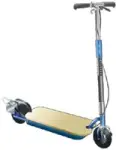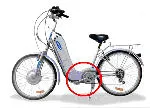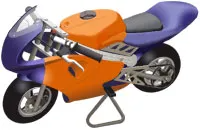Special Vehicles
LOW-SPEED VEHICLES

Cannot be operated on roads in Manitoba Manitoba’s HTA does not address these devices and their operation. Low-speed vehicles fall within the HTA definition of a "motor vehicle", but they do not meet safety standards for on-road use. As such, these vehicles may only be operated where Manitoba’s HTA does not apply, such as on private property.
ELECTRIC AND MOTORIZED SCOOTERS (GO-PEDS)

Cannot be operated on roads in Manitoba While these devices appear to fall within the definition of a motor vehicle under Manitoba’s HTA, they do not meet the provincial equipment safety standards for on-road use. As such, these devices may only be operated where Manitoba’s HTA does not apply, such as on private property.
POWER-ASSISTED/ELECTRIC BICYCLES

Are Permitted to be operated on roads in Manitoba Power-assisted/electric bicycles are defined under the Highway Traffic Act as Bicycles, but do have their own rules and regulations. Keep in mind that a Helmet MUST be worn at ALL times A power-assisted bicycle is a vehicle that:
- has a handlebar for steering and MUST have pedals,
- is designed to travel on not more than three wheels in contact with the ground,
- can be propelled by muscle power applied to the pedals, has an electric motor but no other type of motor, and cannot travel more than 32km/h
POCKET BIKES

Cannot be operated on roads in Manitoba Pocket bikes are meant for closed circuit use only, not roadways. These bikes can be imported as a "restricted-use motorcycle." However, in order to comply with the federal standards, a pocket bike would require a 17-digit vehicle identification number, reflectors and warning labels that clearly state these bikes are intended for off-road use only. The federal MVSA indicates pocket bikes are not intended for use on public roads.
PERSONAL MOBILITY DEVICES (MOTORIZED WHEELCHAIRS AND MEDICAL SCOOTERS)

Do not require registration, licence plates, driver's licence or vehicle insurance Persons operating motorized wheelchairs are treated in the same way as pedestrians. The expected behaviour of people who use wheelchairs to improve their mobility, is generally established by municipal by-laws, and in Altona, are permitted to operate on roadways and sidewalks. A sidewalk should be the first choice for someone using a wheelchair or medical scooter. When there is no wheelchair accessible curb, the person should return to the sidewalk at the first available opportunity. If there is no sidewalk available, people using wheelchairs or personal mobility devices should travel, like pedestrians, along the left shoulder of the roadway facing oncoming traffic.

